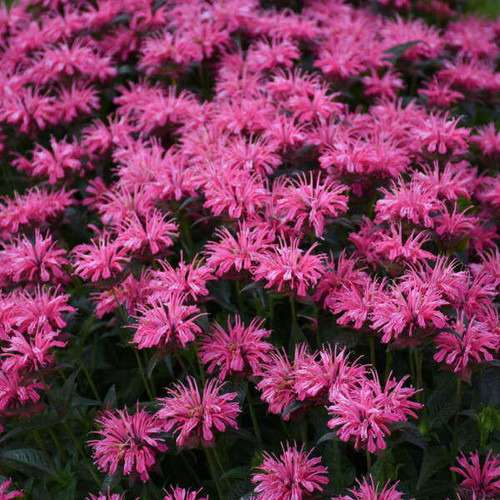Product Description
Stachys officinalis 'Pink Cotton Candy' PPAFCommon name: Alpine Betony, Wood Betony.
Zone 4 to 8.
Full sun to part shade.
Plants reach 24 inches tall and 16 to 20 inches wide, clump-forming perennial.
Growth rate: Moderate.
'Pink Cotton Candy' looks much like 'Hummelo', but produces plump wands of cotton candy pink flowers in early to midsummer. The plant formed a tidy clump of green, basal foliage and topped with lots of showy, bi-colored light and dark pink flower spikes. The foliage looked great all season long.
Stachys grows best in full sun but will also tolerate partial shade. Good drainage is essential for this plant. Plants may be clipped back hard immediately after blooming, to tidy up the clumps for the rest of the season. Divide every 3 to 4 years in spring, or more frequently if plants become woody in the center.
A 2009 introduction, 'Pink Cotton Candy' arose as an open-pollinated seedling found in 2003 among the betonies under evaluation by Richard Hawke of the Chicago Botanic Garden. This genus contains many members with foliage and plant habits completely different from the common gray-leafed (and somewhat invasive) Lamb??s Ears.
Attributes: Border plants, Container, Cut flower or foliage, Mass Planting. Deer and Rabbit resistant.
Other Details
The most important part of the plant is its root system. Healthy roots are the foundation of a healthy, vibrant plant. The type of plug container used is based on the specific needs of the plants. Perennials offered as bare root traditionally perform better when planted as bare root.Planted in a specialized mix, potted plants have well established root systems. Top growth stage will vary depending on the current life cycle and time of year when shipped. In Winter and early Spring dormant plants may be shipped. Dormant plants may be planted right away, even before the last frost date.
Most bare root varieties are field grown for at least one season, though Hemerocallis and Hosta are grown for two seasons. The bulk of the soil is removed during the harvesting process and the tops of most varieties are trimmed back to the crown. They are graded, packed in shredded aspen or sphagnum moss and stored in freezers until ready to be shipped.
See our Container Sizes and Bare Root Perennials pages for more information.
Plant information and care is provided in the Overview section, Plant Genus Page and general information is provided in the Planting Care & Guides. Additional questions can be asked on each Plant page.
Plant Spacing: Using the maximum mature spread or width of a plant to guide spacing, ensures space to grow to full size. To fill an area sooner, plant them closer together. Just remember, future thinning or transplanting may be needed.
Water: Keep a close eye on newly planted perennials, especially throughout the first growing year. Most early plant loss is due to too much or too little water!




